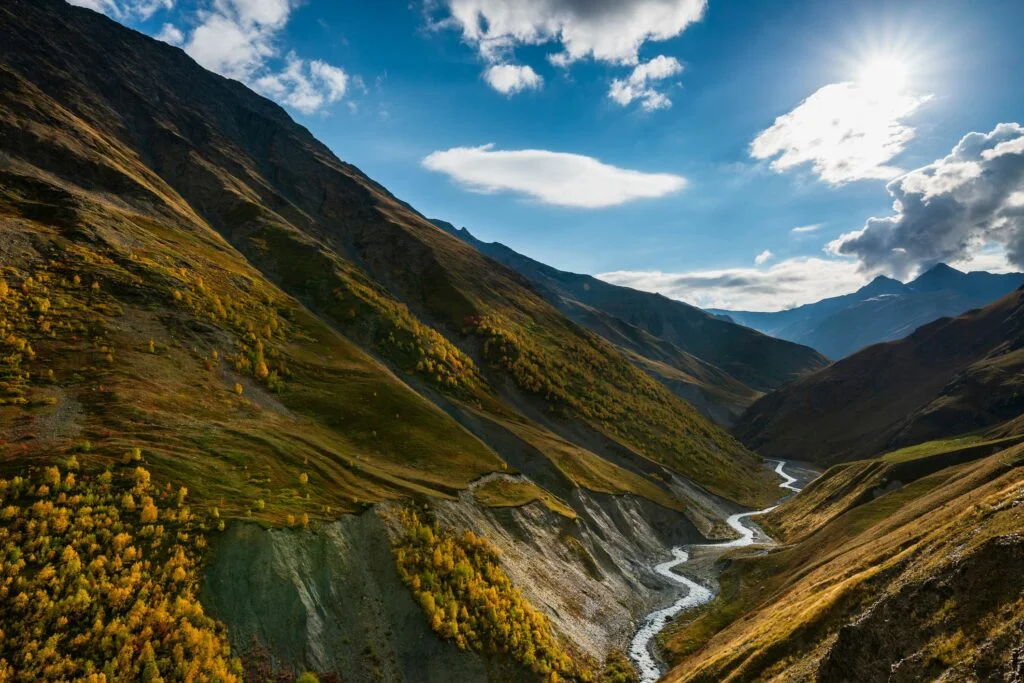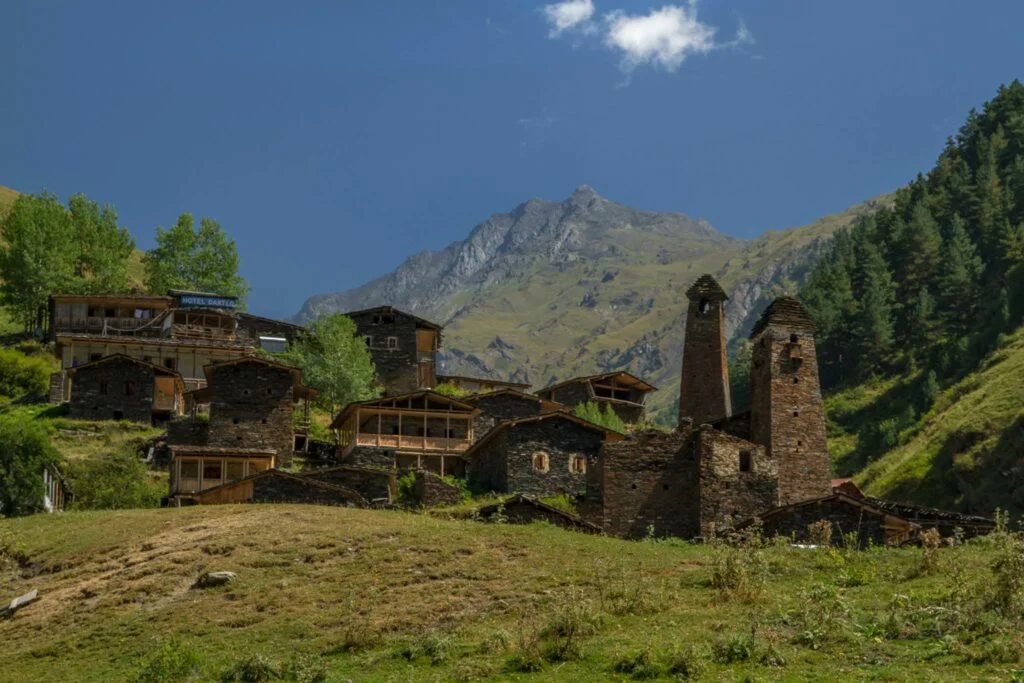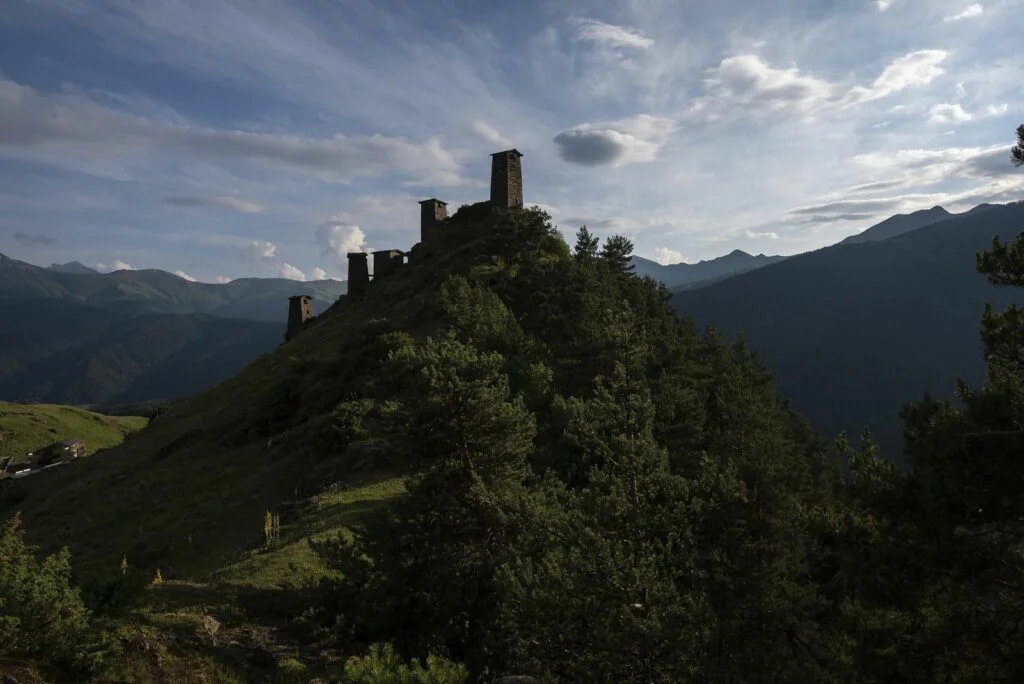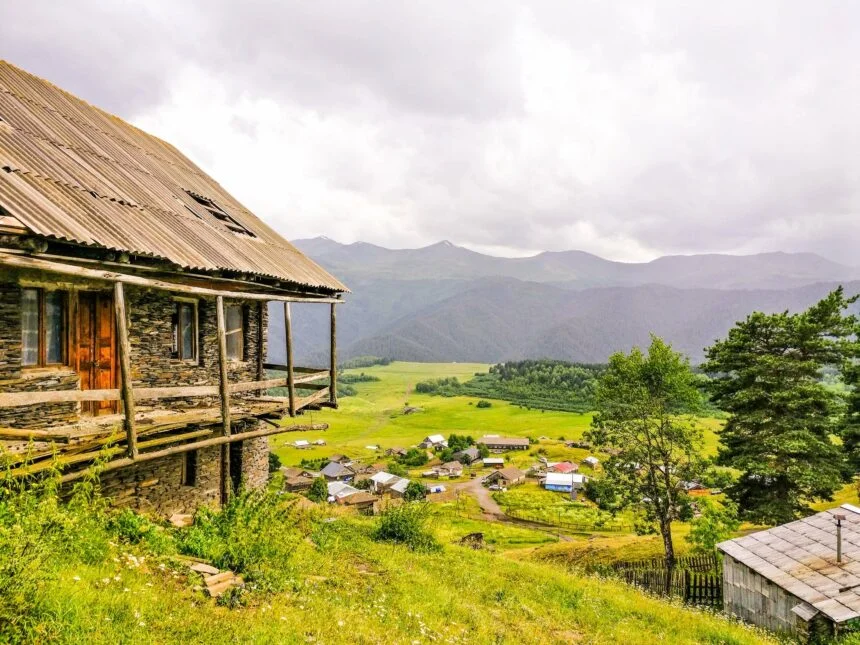This is the most remote part of Georgia’s travel destination, hidden deep within the mountains. To the north and east, closed Chechen-Daghestani borders can be seen, and to the west, hidden by mountains, are the similarly remote regions of Pshavi and Khevsureti.
And Tusheti is flanked by the Greater Caucasus’ 3000-meter high ridge on its southern side. The dangerous route that crosses the 2850-meter-high Abano pass is Tusheti’s only link to the rest of the nation. The fact that it is unpaved and highly bumpy is another major factor in why visitors haven’t yet descended onto Tusheti. Even though they are increasing in number from 1000 tourists in 2008 to over 15000 visitors in 2018.
Tusheti is divided geographically into three main valleys, each of which is named after a subgroup of the Tush people that live there. The Pirikiti Tush people live in the Pirikiti Alazani valley, which runs alongside the Russian border. Dartlo, Parma, and Girevi are the valley’s three most significant communities.

The Tushetis Alazani valley is home to the Gometsari Tush people, whose three most significant villages are Jvarboseli, Dochu, and Verkhovani. Both rivers eventually converge; the Chaghma Tush people live nearby. Here are the settlements of Shenako, Diklo, and Khios as well as Omalo, the geographic center of the entire area.
At the foot of a windy hill where lambs are scattered about, a small wooden cottage with smoke coming from its chimney is located. There is a huge iron pot within that is engulfed in flames and has scratches from years of use. Mountain barley and wild hops combine to make audio, a pleasantly sweet, tart, and hazy brew, as its interior bubbles.
A group of guys who have convened around the cauldron has been present in this hut on this very day every year for as long as they can remember. One specially chosen “Shulta” who controls the entire procedure is in charge. Together they create “aludi” as part of their informal fraternity and as a sacred ritual before the event.
Soon, this unique beverage will be used to officially kick off Atnigenoba, a two-week celebration in the Tusheti area of northeastern Georgia that features pagan ram sacrifices, shrine worship, traditional dancing, and fiercely competitive horse racing.

The beginning and end of the uphill road. When the bulldozer paves the way and local shepherds lead their herds of sheep through Abano pass to summer pastures in the mountains, the road to Tusheti often opens in late May.
Tourists and hikers are eager to explore this distinctive region follow them. Additionally, a lot of Georgians from the lowlands come here to “reconnect” with their former home. Shepherds then move their flocks back to the lowlands in the autumn (often towards the end of September), and the road quickly becomes blocked by snow. And once more, Tusheti enters winter dormancy. During this time, only border guards and a small group of residents known as “tushuraebi” stay here to maintain abandoned villages.

The 2850m-high Abano pass is traversed by the sole route that links Tusheti with the rest of Georgia. Since its construction in the 1980s, only necessary maintenance has been performed on it. Due to this, the travel pace is restricted, and it could take up to 4 hours to complete this 50 km stretch.
Nevertheless, the government just announced a significant rebuild that should significantly shorten journey times.












